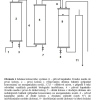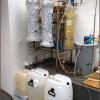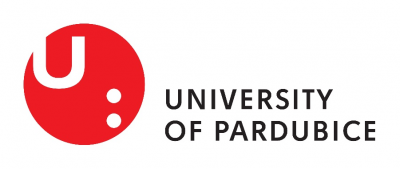Metal ions capture equipment for purification of contamined water using biological immobilization
Technology description
| The name of the technology: | Metal ions capture equipment for purification of contamined water using biological immobilization |
|---|---|
| Challenge: |
Wastewater treatment (especially for mining and industrial wastewater) is one of the challenging and expensive processes that currently many companies have to deal with. The basic procedures, utilized for this purpose, are divided into active (chemical) and passive (biotic). The active process is fast and highly effective, but requires precise dosing of chemicals, monitoring of many parameters and it is problematic in terms of removing sulphates from the water. On the other hand, passive systems allow the reduction of sulphates to sulphides, are less expensive but less efficient (however comply with legal emission limits). The presented technology combines the advantages of both approaches. It allows biological metal ions removal from wastewater,which is not only more cost-effective, but also more sustainable and better accepted by the society. |
| Description: |
Wastewater treatment is carried out in a column system consisting of three key columns/modules, which are arranged in such a way that the liquid flows by itself. The filling of the 1st and 2nd columns (about 45% of the column volume) is made up of a suitable carrier of biofilm of microorganisms. The nutrient medium for the apparatus running is pumped from the reservoir into the first column. The flow through the other columns is ensured by the gravity. Wastewater containing metal ions is then pumped from the storage tank into the third column. In the third column both liquid streams (A-from 2 column, B-wastewater containing metal ions) are mixed and the S2- ions react with the metal ions to form a precipitate, that is removed using lower part of the column. Metal-ion-free water is taken from the column. The block scheme is shown in Figure 1. Functions of the modules: 1st module (column) - adjusting the conditions and composition of the medium to support the needs of the sulphur-reducing bacteria (SRB) in the second module, which are responsible for sulphide production 2nd module (column) - SRB bacteria in this column reduce sulphates to sulphides, which are used to precipitate metals in the third module 3rd module (column) - mixing of the second column stream medium containing sulphides with the wastewater stream containing metal ions and subsequent precipitation of these metals in the form of the corresponding sulphides |
| Commercial opportunity: | Technology suitable for mining applications and/or industrial production (e.g. metal and electronic waste processing) |
| IP protection status: |
Slovak patent granted, doc. No. SK288738 Czech utility model granted doc. No. CZ29821U1 |
| Development status: |
Phase 3Corresponds with TRL 5 and TRL 6 Technology validation and implementing it in real environment. Testing the technology outside of the laboratory and its adjustment to external conditions.
|
| Partnering strategy: | Co-development Collaboration licensing |
| More information: | website CTKT UPCE (https://www.upce.cz/sites/default/files/public/jaka3825/device_for_capturing_metal_ions_193223.pdf) |
| Images: | |
| Categories: | Environment and Climate Chemistry Chemical and bioengineering |
| Owner of a technology: | Univerzita Pardubice |


